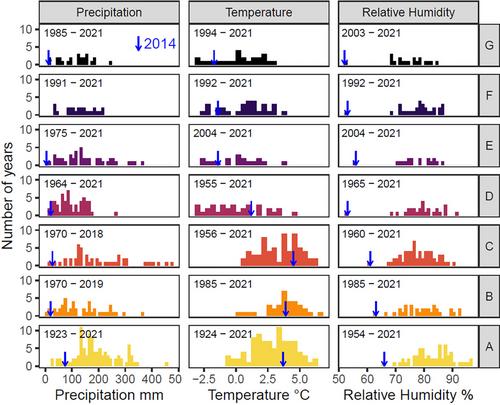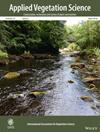Prescribed burning can promote recovery of Atlantic coastal heathlands suffering dieback after extreme drought events
Abstract
Questions
During the winter of 2014, an intense drought combined with sub-zero temperatures resulted in a massive Calluna dieback in Norwegian heathlands. We studied the initial vegetation recovery under two management approaches: natural recovery and prescribed burning. We hypothesized that natural recovery will be slower in more drought-affected sites, whereas burning will facilitate post-fire recovery in all sites by effectively removing dead and damaged heath. Both natural recovery and post-fire succession will be slower in the north.
Location
Calluna heath in seven sites spanning an approx. 600-km latitudinal gradient along the coast of Norway (60.22–65.69° N).
Methods
After a natural drought, 10 permanent plots per site were either burnt or left for natural recovery. Vegetation data were recorded annually in 2016 (pre-fire) and 2017–2019 (post-fire) reflecting a factorial repeated-measures design (n = 280). The data were analyzed using mixed-effects models.
Results
Two years after the drought, we observed high but variable Calluna damage and mortality. Over the four years of study, damaged Calluna recovered, whereas dead Calluna showed little recovery. Both the extent of the damage and mortality, as well as the rate of natural recovery, are only weakly related to site climate or environmental factors. Fire efficiently removed dead and damaged Calluna and facilitated post-fire successional dynamics and recovery in a majority of sites.
Conclusions
Extreme winter drought resulted in substantial and often persistent damage and dieback on Calluna along the latitudinal gradient. In sites with high mortality, prescribed burning removed the dead biomass and, in some cases, facilitated vegetation recovery. Traditional heathland management, which uses burning to facilitate all-year grazing by Old Norse sheep in Atlantic coastal heathlands, can be an efficient tool to mitigate dieback events and more generally to increase resistance to and resilience after extreme drought events in the future.


 求助内容:
求助内容: 应助结果提醒方式:
应助结果提醒方式:


